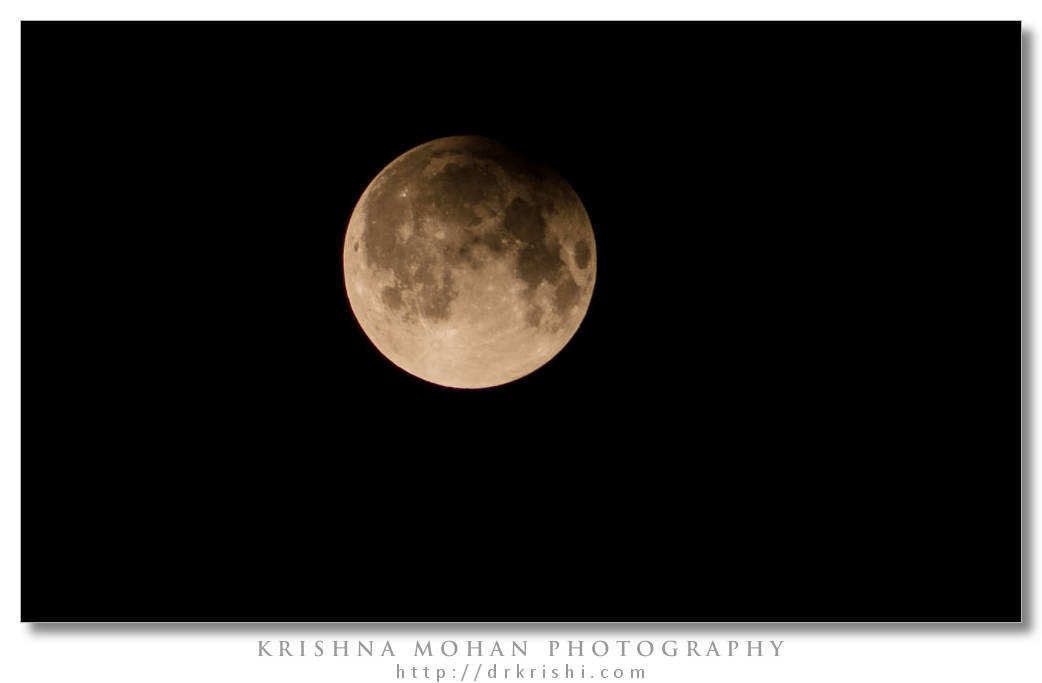
Partial lunar eclipse occurred between 1.24 am to 1.53 am on Friday April 26 at my place. Earth’s dark umbral shadow barely clips the full moon for 27 minutes, causing the third-shortest partial lunar eclipse in the 21st century. There are two more lunar eclipses later this year, but both are penumbral. The April 26, 2013 eclipse will be the last time Earth’s dark umbral shadow touches the moon’s face until the total lunar eclipse of April 15, 2014. I used my Panasonic Lumix DMC-FZ200 at maximum tele-focal length of 600mm (35mm equivalent) at f/2.8, ISO 100, Shutter speed 1/250th second handheld to capture this.
What causes a partial eclipse? A lunar eclipse can only happen at full moon, when the moon lies generally opposite the sun in Earth’s sky. When Earth resides directly in between the moon and sun, then the Earth’s dark shadow totally falls upon the moon’s surface. This eclipse, the alignment of sun-Earth-moon is a little off, so it’s only a partial eclipse.
A lunar eclipse happens when the long shadow of Earth touches the moons face. Earth’s shadow has two parts: a dark inner umbra and lighter surrounding penumbra. The moon did go into the darkest part of Earth’s shadow tonight, the umbral shadow, but only briefly. Thus tonight’s eclipse was an extremely shallow partial lunar eclipse, with only the northernmost portion of the moon passing through the Earth’s dark shadow for about 27 minutes. At the greatest eclipse, the Earth’s dark shadow will cover less than 1.5% of the moon’s diameter.


Great Catch Dr. Krishi. Especially so on a P & S. From which place did you take it? I mean you need a dark sky where there are no refracted city lightings. Was the focus set for infinity?
This is from my home, I had to focus on moon as the lens has no settings to set to infinity. Even with lights it is perfectly possible to capture moon, see the settings used. That is because Moon is reflecting the sunlight. If you want to capture stars, comet etc then only you need clean sky which is not polluted by our street light.
?????????? ?????? ?????????? ????? ?????? ?????????????. ???????????? ???? ????? ?????? ????? ???????? ???????? 😉